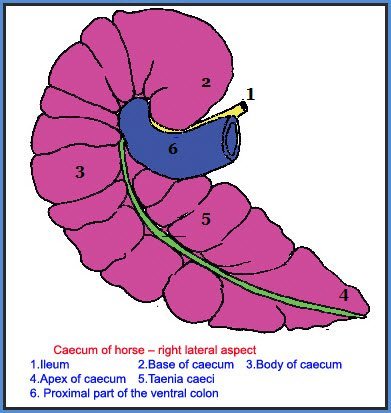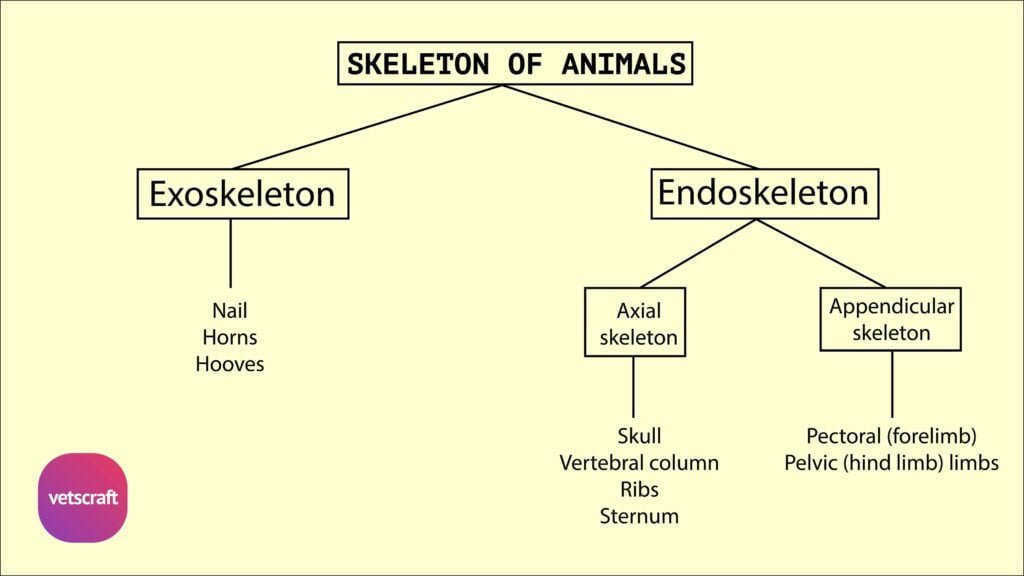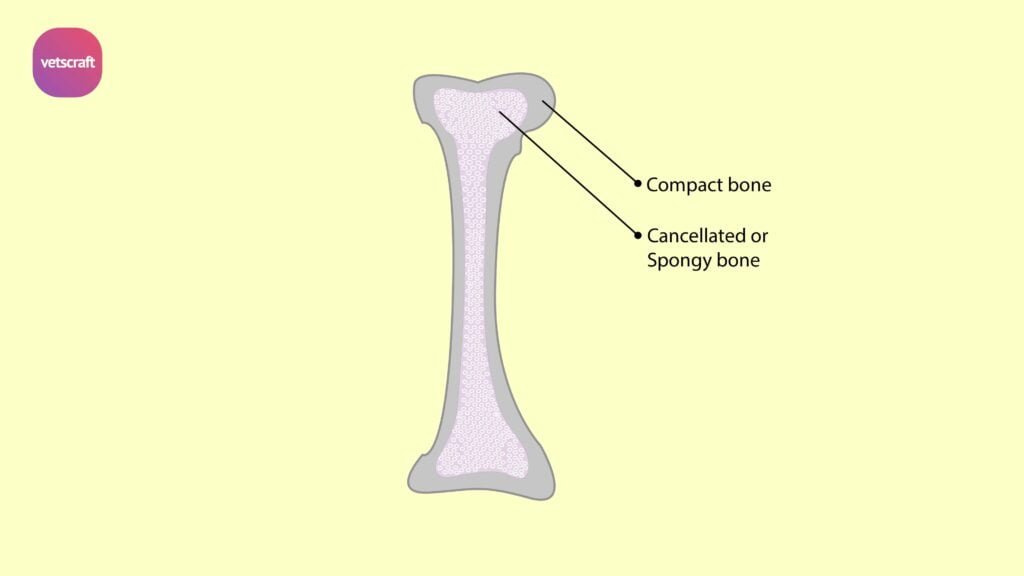TABLE OF CONTENTS
Large intestine of Horse
Length of Large intestine of Horse is 7.5 to 8 m.

- It differs from the small intestine with the following features
- In being sacculated
- In possessing muscular bands
- Great size
- More fixed position
Caecum of Horse
The caecum of Horse is about 1.25 m long. It is comma shaped and extends from the right iliac region through the right lumbar region to the abdominal floor behind the xiphoid cartilage. It presents a base, an apex and a body.

Both extremities are blind and the ileo-caecal and caeco-colic orifices are placed close together on the lesser curvature of the base of the caecum.
The base is strongly curved, The body is related on the right to the diaphragm, duodenum and liver and on the left to the terminal parts of the colon and small intestine. The caecum has four longitudinal muscular bands.
Colon of Horse
- Colon is divisible into greater colon and lesser colon based its diameter
- The greater colon begins at the caeco-colic orifice and ends by joining the small colon
- It is 3 to 3.7 m. long and has a diameter of 20 to 25 cm It consists of two parallel parts attached by folds and it is kept folded in the abdominal cavity so that it presents 4 parts
- The first part or the right ventral part begins at the lesser curvature of the base of caecum, passes downwards and forwards and bends at the xiphoid cartilage of the left and backward forming the sternal flexure
- The second part or the left ventral part passes backwards on the abdominal floor to the left of the first part of caecum, reaches the pelvic inlet and bends dorsally and forwards forming the pelvic flexure
- The third part or left dorsal part, passes forwards dorsal to the second part, reaches the diaphragm and left lobe of the liver, turns to the right and backwards forming the diaphragmatic flexure
- The fourth part or the right dorsal part passes backward dorsal to the first part, reaches the medial face of the base of caecum turns to the left and upwards behind the saccus caecus of the stomach, becomes constricted by the coils of the floating small colon
- Diameter: Ventral parts about 20 to 25 cm. Left dorsal about 8 to 9 cm Right dorsal about 50 cm
- Muscular Bands: Ventral parts have four bands. Left dorsal -1 at first and 2 added later on. Right dorsal – 3
- The lesser colon begins from the termination of great colon and lies in the form of coils in the space between the stomach and pelvic inlet dorsal to the left part of great colon
- Its length is about 3.5 m. and diameter about 7.5 to 10 cm
- They are mingled with those of the small intestine from which they can be distinguished by means of sacculations and the two muscular bands
- One of the bands is free; the other is concealed by mesentery
- It is attached to the sublumbar region by the colic mesentery
Rectum of Horse
The rectum of horse is similar to that of the ox but is slightly larger in size.

